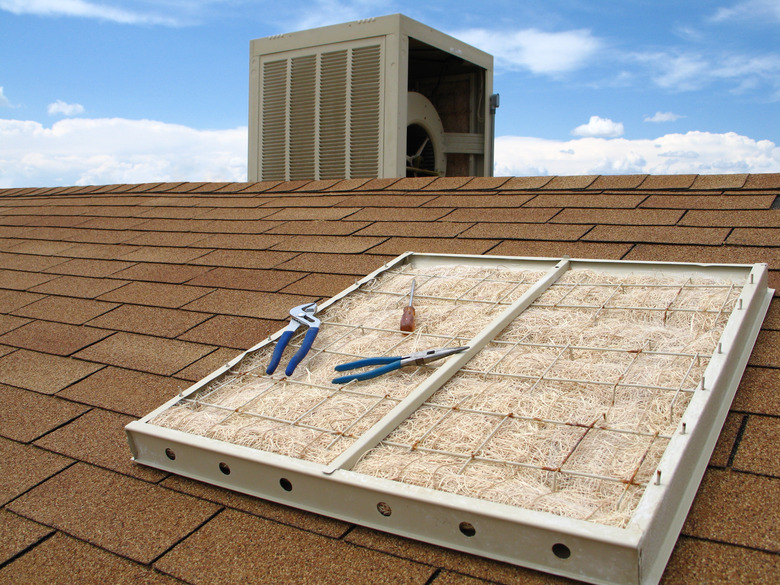How Do Air Coolers Work?
We may receive a commission on purchases made from links.
When you think of an air cooler, a picture of an air conditioner might spring to mind, but the term "air cooler" actually refers to an evaporative cooler, and it's a very different type of machine. Both types of coolers rely on the change of state of a liquid to a gas, which is an endothermic process that takes heat out of the ambient air. The liquid used by an air conditioner is a special refrigerant that circulates through a sealed coil, however, while an air cooler uses water.
An air cooler consumes a lot less energy than an air conditioner, but it isn't without its drawbacks. One of the main ones is that it's really only suitable for dry, arid climates. Water doesn't evaporate efficiently in high humidity, which is a fact known to anyone who conducts strenuous activity on a hot, humid day, and the fact that air coolers actually add moisture to the air doesn't help. All that moisture can contribute to mold growth, which is a problem you don't encounter with an air conditioner that's working properly.
Tip
Air coolers are also known as evaporative coolers or swamp coolers. They rely on the cooling effect of water evaporation.
How an Air Cooler Works
How an Air Cooler Works
The principle behind an evaporative cooler — also known as a swamp cooler — is the utmost in simplicity. In one of the most popular designs, water trickles over an absorbent yet porous pad while a powerful fan circulates air through the pad and into the living space. Air circulation evaporates the moisture on the pad, which draws heat from the air, and the fan distributes the cooled air through a duct system or directly into the house through a grate. Besides the fan, the only other working part is a pump to maintain a steady flow of water over the pad. Some models don't even have a pump, substituting a reservoir that the user has to refill manually.
Another design eliminates the pad by supplying the fan blades with tiny apertures that spray water droplets into the path of the fan. More properly known as evaporative fans, these coolers are precision engineered to deliver just enough water to allow for complete evaporation, so there's no need for a drain pan at the bottom of the unit to catch and recirculate water that didn't evaporate.
Where Air Coolers Work Best
Where Air Coolers Work Best
The drier the climate and the hotter the weather, the more suitable are the conditions for evaporative cooling. If the ambient air temperature is 10 degrees Celsius (50 degrees Fahrenheit) and the relative humidity is 10 percent, a swamp cooler can lower the temperature by 6 degrees Celsius (11 degrees Fahrenheit), but if the humidity is 90 percent, it will only lower it by 0.5 degrees Celsius (1 degree Fahrenheit), which is hardly any difference at all.
On a very hot day, the contrast in cooling capacity is even more dramatic. If the temperature is 30 degrees Celsius (86 degrees Fahrenheit) and the humidity is 10 percent, a swamp cooler will lower the temperature by 12.5 degrees Celsius (22.5 degrees Fahrenheit), but if the humidity is 90 percent, the difference in temperature will be only 1 degree Celsius (1.8 degrees Fahrenheit), which is again hardly any difference.
The best places for swamp coolers are dry, desertlike regions, such as the American Southwest. In areas of high humidity, they simply cause problems by adding to the humidity while providing very little cooling benefit.
Mold Is the Main Drawback
Mold Is the Main Drawback
When an air cooler is failing to provide cooling because of high humidity, it's also adding moisture to the rooms into which the air is blowing, and that's problematic. Mold loves moisture and needs it to flourish, so mold colonies may appear on surfaces in the room into which the air is blowing, and that's not all. It also grows on the moisture-absorbing pad inside the machine, and the fan distributes the spores into the air that people breathe.
You can forestall this by changing or cleaning the pad often, but that may not be practical if you have a roof-mounted unit. In humid climates, you're better off with an air conditioner, which was originally designed by its inventor to be a dehumidifier.
